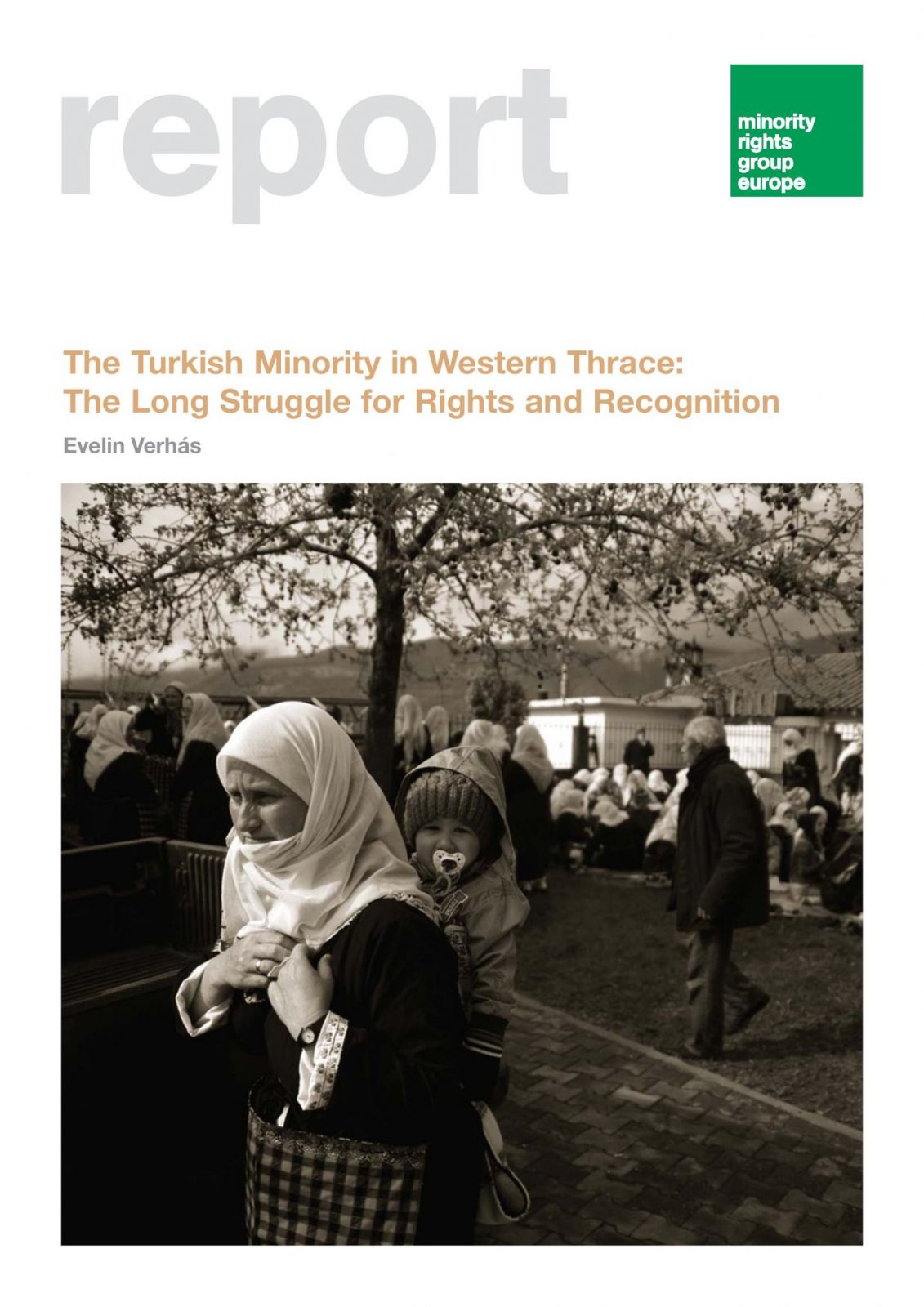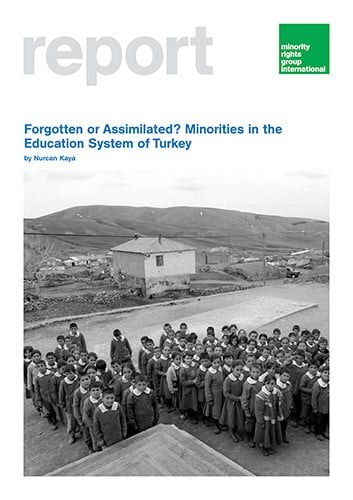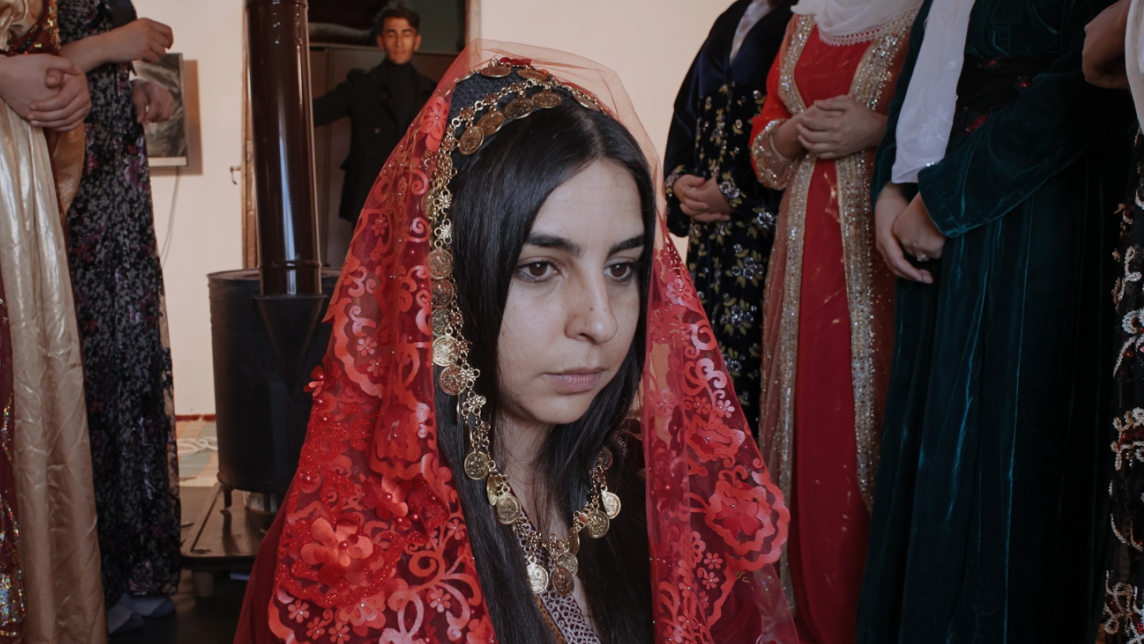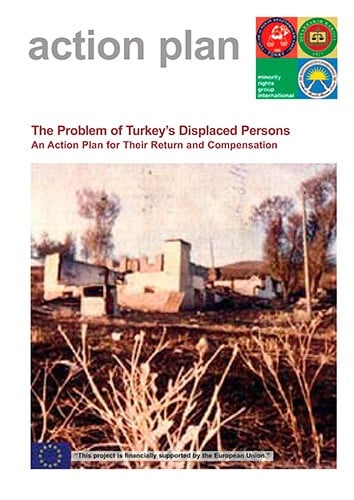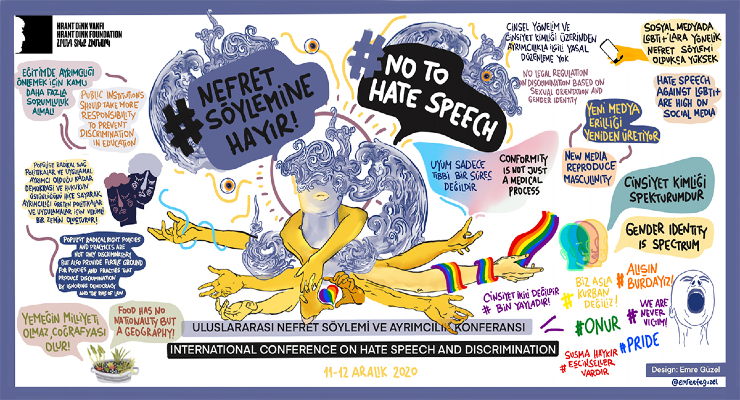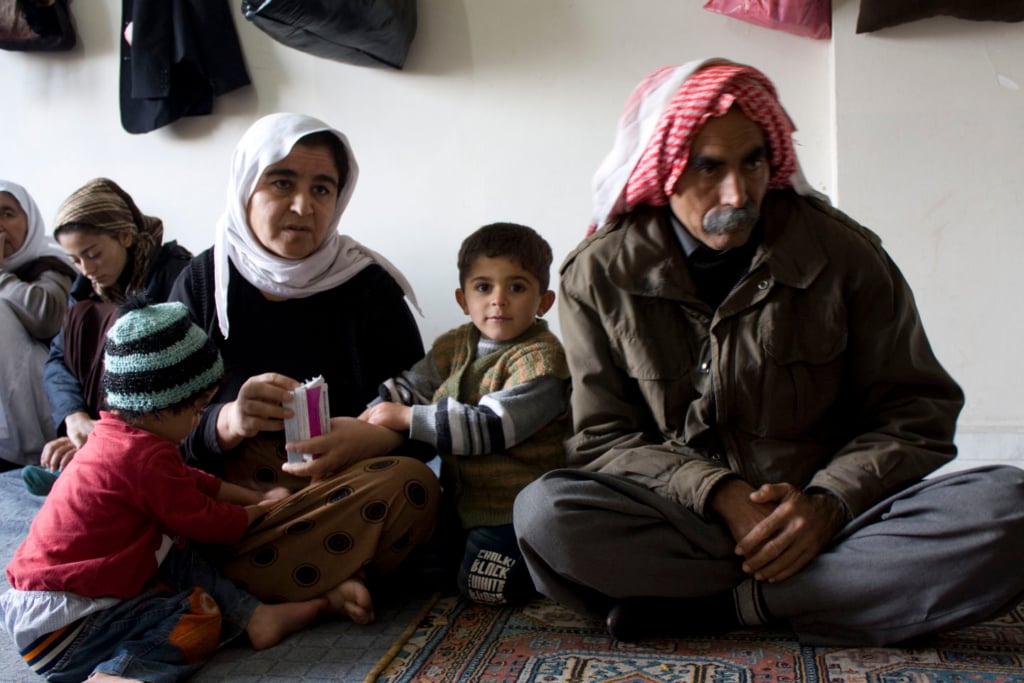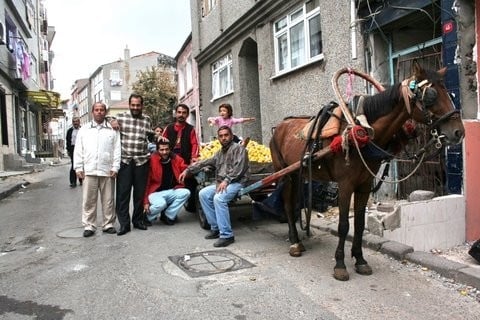Türkiye
-
Main minorities and indigenous peoples: Caucasians, Kurds, Laz, Roma, Turks, Yezidis
Main languages: Arabic, Kormanje and Zaza Kurdish, Laz and Turkish – the only official language.
Main religions: Alevism, Armenian, Assyrian and Greek (Rum) Christianity, (Sunni) Islam and Judaism. Around 99 per cent of the population are Muslim, 80 per cent of whom are Sunni. There are less than 150,000 Christians of various denominations and other smaller minorities including Baha’i.
Türkiye continues to accept only three non-Muslim groups as minorities: Armenians, Rum Orthodox Christians (Greeks) and Jews. This means that other non-Muslim groups and ethnic minorities, such as Alevis, Assyrians, Circassians, Kurds, Laz and Roma, are not officially recognized, limiting the exercise of some political and cultural rights by these groups. Even minorities with official recognition cannot exercise their rights fully, as Türkiye limits their rights to those guaranteed in the Lausanne Peace Treaty (signed in 1923 between Turkey and the Allied forces following World War I).
Minorities who differ from the majority on the basis of their ethnicity, religious affiliation or mother tongue remain unacknowledged in the eyes of the law. The number of individuals belonging to various minority groups in Türkiye is unknown since the state does not ask citizens about their ethnic, religious or other origin in censuses. Up to 1990, censuses included a question about mother tongue, but after 1965 the State Institute of Statistics stopped disclosing this information. Thus, the only official information on minorities in Türkiye relates to the number of individuals who declared their mother tongue in 1965. This information is out of date and probably inaccurate because some individuals might not have disclosed their mother tongue, and because mother tongue is more an indicator of the language spoken in the family than the ethnic origin of the individual. There is no scientific research on the numbers of minorities in Türkiye. The list below is non-exhaustive; it includes the main minority groups, irrespective of whether they self-identify as ‘minorities’, and non-conclusive information about each. The quantitative estimates below should be read with caution; they are mostly provided by the minorities themselves and are not confirmed by statistical research.
Ethnic and linguistic minorities
Caucasians
Mistakenly referred to as Circassians, this group consists of various peoples of Caucasian origin: Abkhazians, Chechens, Circassians, Daghistanis, Ossetians and various Turkic groups. ‘Caucasia’ refers to the original homeland of these groups, whose ancestors immigrated from Russia in the mid-nineteenth century. Each group has its own language. The mother tongues of Abkhazians, Chechens, Circassians and Daghistanis belong to the Iberian-Caucasian language family, whereas Ossetians speak an Indo-European language and Turkic groups speak Turkic languages. Ninety per cent of Caucasians in Türkiye are Circassian, while the majority of the remaining 10 per cent is Abkhaz. All Caucasians are Muslim. Chechens and Daghistanis belong to the Şafi denomination of Islam, whereas the rest are Hanafi. Caucasians live in 15 provinces in north-west, central and southern Türkiye. According to the Federation of Caucasian Associations, the number of individuals who self-identify as Caucasian is 3 million.
With the opening of the border with Georgia in 1988, the break-up of the Soviet Union and the global rise in identity politics, a differentiation has emerged among Caucasians. Unlike other groups, Circassians and Abkhazians aspire to return to their historical homelands, where they had left behind a small minority. With the development of relationships between these two groups and their homelands across the border, non-Circassian and non-Abkhazian ethnic groups started to form their own associations.
Kurds
Kurds are the largest ethnic and linguistic minority in Türkiye. The estimated numbers claimed by various sources range from 10 to 23 per cent of the population. According to the 1965 national census, those who declared Kurdish as their mother tongue or second language constituted around 7.5 per cent of the population. However, for reasons indicated above, it is possible that this figure was under-inclusive at the time. Today, most estimates suggest that between 15 and 20 per cent of the Turkish population is Kurdish.
Kurds speak Kurdish, which is divided into Kormanje, Zaza and other dialects. The majority are Sunni Muslims, while a significant number are Alevis. Historically concentrated in the eastern and south-eastern regions of the country, where they constitute the overwhelming majority, large numbers have migrated to urban areas in western Türkiye. Initially, from late 1950s, the Kurdish migration was voluntary and economic. With the outbreak of armed conflict in 1984 between the Turkish army and the Kurdistan Workers’ Party (PKK), more than 1 million Kurds were forcibly evicted from rural and urban areas in eastern and south-eastern Türkiye. The displaced settled in urban centres in the region as well as towns in western and southern Türkiye, and many fled to Europe.
Laz
Laz are a people of Caucasian origin sharing similar roots with the Migrels who live between Abkhazia and Georgia today. There are two main groups of Laz in Türkiye. The first group lives in the eastern half of the Black Sea region, in Rize and Artvin provinces. The second group are the descendants of immigrants who escaped the war between the Ottoman and Russian Empires in the late nineteenth century and settled in Adapazarı, Sapanca, Yalova and Bursa, in western and eastern parts of the Black Sea and Marmara regions, respectively. Both of these groups were originally Orthodox Christians who converted to Sunni Islam during the fifteenth century. They speak Lazuri, a South Caucasian language related to Georgian and Abkhazian. According to the 1965 census, the number of individuals who declared themselves as Laz was 250,000. Their number today is estimated to be between 750,000 and 1.5 million. The majority of Laz have migrated to urban cities in western Türkiye in the last 30 years.
Roma
While the general perception is that the Roma in Türkiye live mainly in Eastern Thrace near the Bulgarian and Greek borders, in fact they live all across the country and, in terms of absolute numbers, are not concentrated in any particular region. Various groups are included under the general heading of Roma/Gypsy, such as the Roma themselves who live predominantly in Eastern Thrace, Teber/Abdal who live across Anatolia and Poşa who live in north-east Anatolia, Çankırı, Kastamonu and Sinop. While there are various Roma languages such as Romani (an Indo-European language spoken by the Roma) and Abdoltili (an Altaic language spoken by the Teber), the mother tongue for the majority of Roma has become Turkish. A recent study shows that there are around 2 million Roma in Türkiye. According to one researcher, who has identified 70 Roma neighbourhoods in Istanbul alone, the real number may be as high as 5 million, as most Roma live in overcrowded households and many do not have identity cards. The vast majority of Roma are Muslim (nearly half Sunni and half Alevi), while there are a small number of Rum Orthodox Roma, as well as a small but increasing number of Protestants who have converted from Islam in the last decade.
Others
Various other ethnic minorities living in small and undetermined numbers around the country are Arabs (Alevi, Sunni and Christian), Bulgarians, Bosnians, Pomacs and Albanians.
Religious minorities
Alevis
Alevi is the term used for a large number of heterodox Muslim Shi’a communities with different characteristics. Technically falling under the Shi’a denomination of Islam, yet following a fundamentally different interpretation than the Shi’a communities in other countries as well as the Caferis in Türkiye, Alevis constitute the largest religious minority in Türkiye. They differ considerably from the Sunni Muslim majority in their practice and interpretation of Islam. Linguistically, they consist of four groups: Azerbaijani Turkish, Arabic, Turkish and Kurdish (both Kurmanci and Zaza). The last two categories constitute the largest Alevi groups. The number of Alevis is a matter of contention. Estimates from different sources range considerably – from around 10 per cent to as much as 40 per cent of the total population – but community spokespeople suggest that Alevis could number in the region of 20 to 25 million.
Armenians
Armenians are among the ancient people of Anatolia. The majority of Armenians in Türkiye today belong to the Orthodox Church, while there are also a few Catholic and Protestant Armenians. Their number was around 2 million during the Ottoman Empire. Today, slightly more than 60,000 remain. Of these, around 60,000 are Orthodox, 50,000 of whom live in Istanbul, around 2,000 are Catholic and a small number are Protestant. Catholic Armenians have an archbishop in Istanbul and their spiritual leader is the Roman Catholic Pope in Rome. The Orthodox community has its own Patriarchate in Istanbul. Armenians run private schools providing primary and secondary education in their mother tongue.
Assyrians
Also called Syrian Orthodox Christians or Syriacs, the language and practices of Assyrians originated in early Christianity. Their historical homeland in Türkiye is the provinces of Mardin and Hakkari in the south-east. Around 95 per cent of Assyrians in this region have left Türkiye because of persecution and displacement. Today, their numbers are estimated at approximately 25,000, with the large majority based in Istanbul and around 3,000 based in the south-east.
Assyrians belong to the same ethnicity and speak the same language (Assyrian). They are divided into four main groups based on differences of theological interpretation and denomination. The Assyrian Orthodox community in Türkiye has four metropolits: Turabdin, Mardin, Adıyaman and Istanbul. Their patriarchate is in Damascus, Syria. The Deputy Patriarch of Assyrian Catholics is also in Istanbul; their patriarchate is in Lebanon.
Caferis
According to their own understanding, Caferis’ presence in Türkiye is a result of the fact that their historical homeland in the province of Iğdır was transferred from Russia to Türkiye when the borders of the latter were drawn. Most Caferis are ethnically Azerbaijani Turks. However, they define themselves primarily as a religious group belonging to the Shi’a denomination of Islam. According to information provided by a former Minister of Culture, the number of Caferis is around 3 million. Caferider, the national organization of Caferis, endorses this figure. As a result of economic migration since the 1980s, the highest number of Caferis – around 500,000 – live in Istanbul. The lack of a vibrant economy and the resulting hardships in Iğdır also led to waves of emigration to Europe.
Jews
The Jewish community in Türkiye dates back to the Roman Empire. The vast majority of Jews in Türkiye are descendants of Sephardic Jews expelled from Spain in 1492. Their language is Ladino, a variant of fifteenth century Spanish. There is also an ethnic Ashkenazi minority, who speak Yiddish. There are now less than 20,000 Jews in Türkiye, 600 of whom are Ashkenazi. The vast majority live in Istanbul, around 2,500 in İzmir and the rest in very small numbers elsewhere.
Reformist Christians
Also known as the new Christians in Türkiye, they are a heterodox group made up of Presbyterians and other Protestants. This group includes both citizens and expatriates. The estimated number of Protestants in Türkiye is 6,000–7,000, most of whom live in Istanbul, Ankara and İzmir. Protestantism has been a part of Türkiye’s history for 200 years, first spreading among the non-Muslim minorities. Conversion from Islam to Protestantism was very rare until the 1960s, but Muslim converts currently constitute the majority of Protestants.
Rum Orthodox Christians
The Rum Orthodox community comprises ethnic Rums in Istanbul, Gökçeada (İmros) and Bozcaada (Tenedos), as well as Arabic- and Turkish-speaking Antakya Rum Orthodox Christians (Antiochians) who are not ethnically Rum. Until recently, the total number of Rum Orthodox in Türkiye was pronounced to be around 2,000–3,000. However, other research has estimated the community is at least 4,000-5,000 strong, with some calculations suggesting that the total number is over 16,000, including more than 12,000 not officially recognized by the Turkish state as Rum Orthodox.
Yezidis
Yezidis (also called Ezidis) adhere to a non-monotheist religion of ancient origin in the Middle East. Yezidis emphasize their distinct religious identity. Some identify ethnically as Kurds, while others view themselves as having a distinct ethnic identity as Yezidis. They speak the Kormanje dialect of Kurdish. Historically concentrated in eastern, southern and south-eastern Türkiye, their number was around 60,000 in the early 1980s. From the mid-1980s, nearly all of them emigrated to Europe to escape persecution and armed conflict. The number of Yezidis remaining in Türkiye is unknown, with some research suggesting that only a few hundred remain.
Since the offensive by ISIS militants in Sinjar, Iraq in the summer of 2014, several thousand Iraqi Yezidi refugees are now based in Türkiye , where they reportedly face particular discrimination due to their faith as well as their status as refugees.
-
Environment
The Republic of Türkiye reaches from the Balkan region of south-eastern Europe to the Anatolian peninsula in southwestern Asia. It shares borders with eight countries and four seas, clockwise from its north-west border is Bulgaria, then the Black Sea, Georgia, Armenia, Azerbaijan, Iran, Iraq, Syria, the Mediterranean Sea, the Aegean Sea and Greece, and the sea of Marmara, going intoTürkiye’s Golden Horn, where the country’s second city, Istanbul, straddles Europe and Asia.
History
The region of what is now modern-day Türkiye has historically included many ethnic, religious and linguistic minorities, including Armenians, Assyrians, Greeks, Keldanis, Kurds and Yezidis. Due to migration throughout history, Anatolia became home to even more groups, such as Jews, Roma and some European communities, including French and Italians.
Its geographical position between Europe and Asia led to a complex mixture of cultural processes, from the Hellenization that followed Alexander the Great’s conquest of the area and its subsequent absorption into the Roman Empire, culminating in the eventual establishment of Byzantium. Following a long period of decline, the last remnants of the Byzantine Empire came to an end with the fall of Constantinople in 1453 to the Ottomans.
From the fourteenth to the twentieth century, the empire was governed by mainly Turkish-speaking, Sunni Muslim Ottomans. Their rule was facilitated by predominantly ethnically non-Turk devşirmes (Christians of various ethnicities who were taken from conquered lands at a young age to serve in the military and in the palace, after having been converted to Islam). This empire had a working system of tolerance towards minorities, allowing religious groups limited autonomy in governing themselves through the millet system. This system was based on an informal hierarchy of communities, at the top of which were Sunni Hanafis. The empire accepted thousands of Jewish refugees following their expulsion from Spain in 1492, although it was less welcoming to Muslims expelled from Spain at the same time.
However, by the nineteenth century the Ottoman Empire had already absorbed large numbers of Muslims from the Balkans and Caucasus as it lost control of these regions to Christian powers. An estimated 750,000 Balkan Muslims sought refuge in Ottoman Turkey in the period 1876–96. Since then at least another one million have migrated from the Balkans, mainly Yugoslavia, partly as a result of the Balkan War 1912–13. Others came later as refugees from communism. Circassians were expelled from the Caucasus during the Russian capture of that region, 600,000 coming in the period 1856–64, and more in 1877–8, and there are probably about one million people of Circassian or Abkhaz descent in Sakariya, Bolu, Bursa, Eskisehir, Sinop, Samsun, Tokat and Kayseri. As Hanafi Muslims they share the same religious identity as indigenous Turks.
Towards the end of the Ottoman Empire there was a rise in nationalism, as well as demands for rights and equality, among both minority and majority groups. The government’s failure to meet society’s demands for democratization and equal treatment encouraged outside powers, in particular, Russia, France and, at times, Britain, to intervene in Ottoman affairs by claiming to be protectors of Christian minorities. The culmination of this process was the near-total destruction of Christian communities – Armenian, Assyrian and Rum – in Anatolia during the war with Russia in 1915.
The peace treaties of 1919–20, following the defeat of the Ottoman Empire and its allies, saw the victorious states requiring defeated and new states to guarantee the rights of ethnic, linguistic and religious minorities. Minority protection was imposed on Türkiye in the Treaty of Sèvres. Similarly to other treaties at the time, it required Türkiye to guarantee the rights of ‘racial, religious or linguistic’ minorities, without distinction. However, at the same time, much of the former Ottoman territory was occupied by the Allied powers, with the British and French being awarded most of the Arab regions, and parts of Anatolia being occupied by Italy, France and Greece. Istanbul was occupied by the British.
The reaction in Türkiye was the creation of the new Republic of Turkey under the leadership of Mustafa Kemal Atatürk. The Republic was founded on the remains of a vast empire, which had lost 85 per cent of its territory and 75 per cent of its population over around 50 years. The Republic of Turkey, after its successful War of Independence, negotiated a new Treaty of Lausanne in 1923, whereby it was again effectively compelled by the European powers to grant minority rights to ‘non-Muslims’. The Treaty also granted limited language rights to all citizens. Therefore, there is a historical memory in Türkiye of ‘minority rights’ being associated with an unjustified interference in internal affairs, and they are portrayed in the official language as a once-and-for-all granting, in 1923, of special treatment to non-Muslims. While a separate legal regime was created for some non-Muslims (in practice only Armenians, Greeks and Jews), all Muslims, categorized as ‘Turks’, became subject to homogenization policies. Inherent in this dichotomy was a trade-off between minority status and full citizenship: non-Muslims had to pay the high price of ‘second-class citizenship’ in return for minority rights, and various ethnic groups, as well as individuals belonging to non-Sunni denominations of Islam, were compelled to suppress their differences in exchange for ‘full citizenship’. The process of eradicating non-Muslims from Anatolia continued after Lausanne with the 1923 population exchange agreement, whereby Türkiye and Greece ‘exchanged’, i.e. expelled their respective Rum and Turkish minorities, with only a few exceptions. The remaining non-Muslims would essentially receive second-class citizenship under the disguise of a minority protection regime.
Türkiye within its present borders was established in 1923, following the Ottoman defeat in 1918, and from 1919 until 1922, and bitter wars against mainly Greek, French and Armenian attempts to implement Allied plans to dismember Anatolia. Nationalist Turks successfully appealed to Kurds to assist them in the name of the Muslim fatherland, a cause which had great appeal in view of the Armenian Christian threat in eastern Anatolia. The Treaty of Sèvres, 1920, which the Allies had failed to enforce on Türkiye, had allowed for the creation of a Kurdish state, but at a time when Muslim Anatolia was under threat few Kurds were interested in independence under Allied (Christian) auspices.
However, in 1923 Türkiye began to formulate its position on minorities. It agreed a population exchange whereby almost all Orthodox Christians in Türkiye were transferred to Greece in return for Greece’s (non-Albanian) Muslims, about 400,000 in all. Only a small number escaped this transfer, but the Greek Orthodox Patriarchate of Constantinople remained in the city.
Turkey also negotiated the Treaty of Lausanne, 1923, with the Allies from a position of strength. The Allies pressed for the inclusion of all minorities, for example Kurds, Circassians and Arabs, in the treaty terms, but Türkiye refused any distinct status for non-Turkish Muslims. Only Greek and Armenian Christians and Jews were formally acknowledged as minorities.
However, it agreed that ‘No restrictions shall be imposed on the free use by any Turkish national of any language in private intercourse, in commerce, religion, in the press, or in publications of any kind or at public meetings’ (Article 39) or orally in court. Türkiye failed to honour this commitment with regard to Kurdish, Arabic and other minority languages. It also drove most of the small Assyrian and Chaldean Christian communities across the border into Iraq in 1924-5. In 1926 it adopted the Swiss civil code, and renounced the minority rights secured for the Jewish, Armenian and Greek communities. Under pressure, all three formally agreed to this renunciation and were assured that the new code would apply to all citizens without distinction of race, nationality or religion.
Türkiye evolved a new state ideology to create a modern state on European lines, based on a single secular national identity. It abolished the sultanate (1922) and the caliphate (1924), thereby removing the Islamic basis on which Kurds had helped defeat the Christian threat. It insisted that all Muslims in the republic were Turkish regardless of ethnic origin. Its concept of Turkishness was based on social and cultural conditioning not ethnicity. Anyone could rise to the highest positions of state so long as they identified themselves as Turkish. On the whole, Türkiye took the view that such people became Turks on settling in Türkiye, though a few on the far right believed in ethnic purity and pan-Turanic solidarity, that is, among all Turkic peoples from Türkiye through Turkic-speaking communities as far as China.
The state, under its founder, Mustafa Kemal Atatürk, brooked no opposition, allowing only one political party. In its drive to modernize, it enfranchised women and encouraged them to play a full part in the life of the state. As in Europe, this aim has only partially been fulfilled. Among conservative citizens of the republic, the status of women is still determined by traditional social values. The state also made items of Western dress compulsory and replaced Ottoman Arabic with a variant of Latin script for written Turkish. The state saw religious sentiment as one of the greatest threats to its aims. It therefore took direct control of formal Islamic institutions and also proscribed the populist Sufi brotherhood (tarikat) networks, executing religious leaders who defied state will, but were unable to destroy the tarikats once they had gone underground.
Well over 150,000 Bulgarian Turks arrived mainly during the mass expulsion of 1950–1. They were deliberately scattered over western and central Türkiye to integrate them into the Turkish population but they remained readily identifiable. Another estimated 300,000 arrived in 1989, escaping a forced assimilation campaign in Bulgaria, of whom half subsequently returned.
Despite official protections, a series of policies since 1923 contributed to their near-eradication of many non-Muslim minority groups: the encouragement and tolerance of mob attacks – in 1934 against Jews in Thrace and in 1955 against non-Muslims in Istanbul; the exclusive military conscription of non-Muslims to serve in labour battalions in 1941 and 1942; the levy on non-Muslims of a disproportionate and discriminatory wealth tax in 1942; the deportation of Istanbul Rums in 1964; and the systematic confiscation of properties belonging to non-Muslim foundations since 1960s. These incidents, laws and policies achieved two outcomes: the flight of the vast majority of the remaining non-Muslims from Türkiye and the transfer of wealth to Muslims.
On the other hand, various ethnic groups who shared a common Muslim identity were labelled as ‘Turks’ and became subject to homogenization policies through various laws and policies adopted in the 1920s and 1930s: the establishment of the Directorate of Religious Affairs (Diyanet İşleri Başkanlığı, or Diyanet) on 3 March 1924; ‘Citizen, speak Turkish!’ campaigns; nationalist theories advocating the supremacy of the Turkish history and language; the forced resettlement of minorities in predominantly Turkish areas in order to assimilate them into the ‘Turkish culture’; the prohibition of the use of non-Turkish names; the ban on the use of minority languages in schools and in courts; and the requirement of ‘belonging to the Turkish race’ for recruitment to military academies and employment in the public sector. Thus, the distinct cultures, languages and histories of various ethnic groups were suppressed in return for the ‘prize’ of full citizenship.
Türkiye discovered the limit to its ambitions to remodel itself along prescribed lines. In 1945 internal disputes forced the government to abandon its one-party system. Opposition parties soon attracted the support of those who had suffered under the Kemalist regime, notably the religious. After that formal and populist Islamic expression regained a strong position in national life and by 1990 was a major electoral issue. Relations between Islam and the state remained unresolved. After nearly 70 years of denial, Türkiye was also forced openly to recognize the existence of large Kurdish and Alevi communities. In other words, the pluralism it sought to eliminate in the 1920s has proved stronger than state ideology.
A central issue for decades in Turkish politics has been the brutal and protracted conflict that broke out in 1984 between the government and the Kurdistan Workers’ Party (PKK), an armed opposition group fighting for self-determination. The situation of the Kurds, already one of the country’s most marginalized communities, deteriorated further in the years that followed as the government undertook a military campaign in Kurdish-populated regions while aggressively repressing Kurdish language, culture and other forms of expressions. Increasing violence on both sides resulted in the displacement of millions of civilians. A major factor in Türkiye rapid urbanization in recent decades, especially the main cities in south-eastern Türkiye , was the policy of village destruction, which was central to Türkiye’s internal conflict against the PKK. By 1994, at least 3,000 villages had been deliberately destroyed as part of this campaign. The European Court of Human Rights issued judgments in a number of cases and established that Türkiye had destroyed many villages as part of a military strategy.
With the December 2004 recognition of Türkiye as an official candidate for EU accession, the issue of minority rights, long-suppressed both by the government and in the collective consciousness of society, was placed openly on the agenda. In seeking to fulfil the minority protection conditionality of the Copenhagen criteria the government enacted a series of constitutional and legislative reform laws implicitly granting ethnic and linguistic minorities certain language rights and making some progress towards protecting the hitherto violated property rights of non-Muslims. However, the government carefully avoided any explicit reference that could suggest an official recognition of minority identities. It made minorities’ exercise of their limited rights prohibitively difficult by attaching restrictive conditions to them and by conferring on officials a virtually unchecked authority in adopting secondary legislation.
In recent years, Türkiye has moved away from the tentative progress of preceding years amid renewed conflict, rising nationalism and widespread restrictions under President Recep Tayyip Erdoğan’s increasingly conservative rule. A ceasefire brokered in 2013 with the PKK was seen as an important step towards negotiating an end to the conflict after three decades of fighting that had resulted in thousands of deaths and widespread torture, injury and displacement: however, fighting resumed in 2015. At the same time, Erdoğan took steps to consolidate his hold over the country and undertook an extensive purge of tens of thousands of teachers, civil servants, judges and other public workers, as well as mass arrests. He also, following a narrow victory in a popular referendum called in April 2017, passed sweeping constitutional reforms that concentrated greater powers with the presidency and allow him to run for two further terms. At the same time, his government has cracked down on journalists, activists, political opponents and other dissenting groups.
Governance
The status of minorities in Türkiye is established by the 1923 Treaty of Lausanne, which defines minorities on the basis of religion. It envisions full citizenship rights for non-Muslims and places on the Turkish government a number of affirmative obligations. The Treaty establishes the supremacy of its provisions in the Turkish legal system. Although Lausanne grants minority status to all non-Muslims, in practice, Türkiye has restricted the scope of the Treaty to Armenians, Jews and Rums. This has unlawfully left other non-Muslims, such as Assyrians, Baha’is, Georgians, Maronite Christians, Protestants and Yezidis outside the protection of the Treaty.
Türkiye has been systematically violating Lausanne since the adoption of the Treaty. However, even the full implementation of Lausanne would fall short of extending legal protection to all minorities in Türkiye and meeting their rising expectations. Lausanne’s restrictive definition excludes Türkiye’s numerous ethnic, linguistic and cultural minorities. The Treaty falls far behind contemporary international standards. The only other state to rely on a World War I treaty today as a purported reason to limit its duties towards minorities is Greece, which uses the same Treaty of Lausanne to deny the existence of a Turkish minority in Western Thrace.
The Turkish constitutional scheme ‘solves’ the question of minorities without ever addressing it. There is no reference in the Constitution to the word ‘minority’, not even the Lausanne minorities.
There is no comprehensive legislative framework for minorities in Türkiye, directly granting minority rights. To the contrary, despite significant constitutional and legislative reforms, various laws seek to limit the political, participatory, religious, educational and linguistic rights of minorities. One concrete step was taken in 2016 when the Turkish parliament adopted Law no. 6701 on the Turkish Human Rights and Equality Institution. The new legislation included anti-discrimination provisions as well as paved the way for a human rights body. It was however strongly criticized by civil society organizations as well as the Council of Europe’s European Commission on Racism and Intolerance (ECRI) for not being sufficiently comprehensive or ensuring the independence of the new institution. Three members of the Board were to be appointed by the President of the Republic and the remaining eight members were to be chosen by the Cabinet.
-
Türkiye is a land of vast ethnic, linguistic and religious diversity. It is home not only to Turks, Kurds and Armenians, but also millions of Alevis, Ezidis and Assyrians. There are also Laz, Caferis, Roma, Rum (Greek Orthodox Christians), Caucasians and Jews. A centuries-old mix of languages, cultures and traditions is practiced within its borders. But instead of celebrating this diversity, the history of the Republic of Türkiye is one of severe and sometimes violent repression of minorities in the name of nationalism.
Since the foundation of the state, the only protection for minorities has been that set out in the 1923 Treaty of Lausanne. Türkiye has been violating the Treaty since it was adopted, not least by restricting its scope to Armenians, Jews and Rum Christians. Minorities excluded from the Treaty of Lausanne rights have been banned from using their languages in schools and in media, and from fully exercising their religious rights. Others have been subjected to policies aimed at homogenizing the population of Türkiye and destroying minority language, culture and religion. Normally, only Turkish language, culture and history have been tolerated in education and political life.
The human rights environment in Türkiye has deteriorated significantly following a failed coup attempt in July 2016. The government of President Recep Tayyip Erdoğan undertook a sweeping purge of hundreds of thousands of teachers, public officials, academics, judges and security officials, and the imprisonment of tens of thousands of others for alleged connections with the coup, including many associated with the Kurdish and other minorities. In April 2017, Erdoğan successfully gathered further powers to his office, after a referendum that was widely criticized for irregularities but saw 51.4 per cent of the voters support an executive presidency.
The increasingly draconian approach of the Turkish government is particularly evident in the conduct of renewed hostilities with the Kurdistan Workers’ Party (PKK), a Kurdish armed group. In July 2015, after a two-year ceasefire, the conflict that has lasted for decades (and claimed over 40,000 lives) resumed, bringing significant attacks and casualties on both sides. Since then, around 3,500 have died in the fighting, including hundreds of civilians. While the PKK and affiliated groups have carried out a number of large-scale violent attacks in Turkish cities, including a December 2016 bombing outside a football stadium in Istanbul that led to the loss of at least 38 lives and was claimed by a militant Kurdish splinter group, the Turkish government has been criticized for its disproportionate use of force in its crackdown in the south-east of the country, including a series of indefinite 24-hour curfews, large scale destruction of property, suspected extrajudicial killings, torture, forced displacement and decimation of the local economy. Reports suggest a repeated tactic of shelling and destruction of towns, resulting in many civilian deaths and mass displacement, with between 355,00 and 500,000 believed to have been displaced by the beginning of 2017.
Particularly affected is the city of Diyarbakır, home to a large Kurdish population. The city’s historic district of Sur has been completely destroyed in the fighting. Sur is predominantly home to Kurds and some Armenians, Assyrians and Yezidis, with a wealth of ancient and irreplaceable heritage that has been devastated in the conflict. With the violence intensifying in December 2015, by early 2016 hundreds of shops had been destroyed and more than 30,000 residents forced to flee the area. While the government promised it will rebuild the district, many locals are suspicious of its intentions as Sur had previously been earmarked for redevelopment, with the state’s housing body undertaking demolition work in 2011 that was eventually halted due to strong local opposition. Critics fear that the Turkish authorities will use Sur’s reconstruction as an opportunity to reshape the city in line with their economic and security agendas.
Conflict is not the only threat to Türkiye’s diverse cultural heritage, as development programmes such as the controversial Ilisu dam have undermined the way of life of many communities and resulted in evictions, displacement and resettlement. According to some reports, the dam could displace as many as 78,000 people, most of whom are Kurdish, and impact directly on another 30,000 nomadic people. One of the main sites to be affected is Hasankeyf, a largely Kurdish city with a rich heritage of ancient ruins and caves that may soon disappear as flooding of the area to accommodate a reservoir begins in the summer of 2018.
While there have been some signs of progress for minorities in Türkiye, reflected in the election of a number of new members of parliament (MPs) from minority backgrounds including the country’s Armenian, Roma, Syriac and Yezidi communities in general elections in June and November 2015, significant challenges remain. Among other challenges, minority students face exclusionary curricula and the absence of mother-tongue instruction for many communities. Only children of Jewish and Christian families may apply to opt out of compulsory classes in Sunni Islam, but the process can be cumbersome and in many schools alternatives are not provided for them. They can still find themselves having to remain in religious instruction classes or, alternatively, having to wander around the school premises – making them vulnerable to taunts from pupils and even teachers. Land and property rights also remain a significant barrier for religious minorities, a situation that has seen many important cultural heritage sites destroyed, appropriated or neglected. Minority communities, including Alevis, Assyrians and Greek Orthodox, have historically faced significant barriers as a result to accessing places of worship.
Türkiye’s Roma population and similar social groups such as Abdal have long been among the country’s most marginalized communities, suffering some of the worst housing conditions in the country, characterized by inadequate basic services, insecure land rights and physical segregation. These settlements are also especially vulnerable to destruction and relocation to accommodate urban development – a reality that can leave communities in a protracted state of displacement. Roma students face considerable barriers to accessing education and continue to achieve far lower levels of attainment due to discrimination. Besides economic and geographic constraints, a range of issues including discrimination in the classroom, non-inclusive curricula and the segregation of many children into poorly performing ‘Roma schools’ have entrenched unequal learning outcomes. While there has been some progress in recent years, with the government developing a number of policies that officially recognize the challenges they experience, it remains to be seen if the current strategies will produce positive results. While the government has taken some welcome steps towards improving the lives for Roma, including the adoption of a 2016-2021 National Strategy, Roma still face acute socio-economic barriers.
As of May 2018, Türkiye hosts approximately 3.6 million Syrian refugees. The large majority of refugees living across the country are in urban or peri-urban areas rather than in camps and struggle with lack of services, extreme poverty and social stigmatization. Many can only access informal low paid work, in often exploitative conditions, and parents are often unable to pay to send their children to school. Amidst an economic slump popular attitudes towards refugees are hardening, a shift reflected in an increasingly unwelcoming official stance on refugees. There have been reports of incidents where Turkish authorities attacked Syrian civilians trying to cross the border into Türkiye, as well as large-scale expulsions of refugees back to Syria.
A significant number of Syrian refugees face added disadvantage due to their belonging to minorities such as Syrian Kurds. Dom refugees, another ethnic minority group linked to the Roma with a distinct language, Domari, face particular discrimination due to entrenched prejudices and hostile media coverage of ‘Syrian gypsies’. Refugees from the community have given accounts of harassment by both Turkish soldiers and other Syrian refugees. More generally, there is increased concern about the exploitation faced by the estimated hundreds of thousands of Syrian refugees working illegally in order to survive, lacking decent wages, employment rights and access to legal recourse.
Updated June 2018
Related content
Latest
View all-

30 March 2024
Türkiye’s local elections: the minority lens
Tomorrow, millions of people in Türkiye will head to the polls and vote in local elections.
-
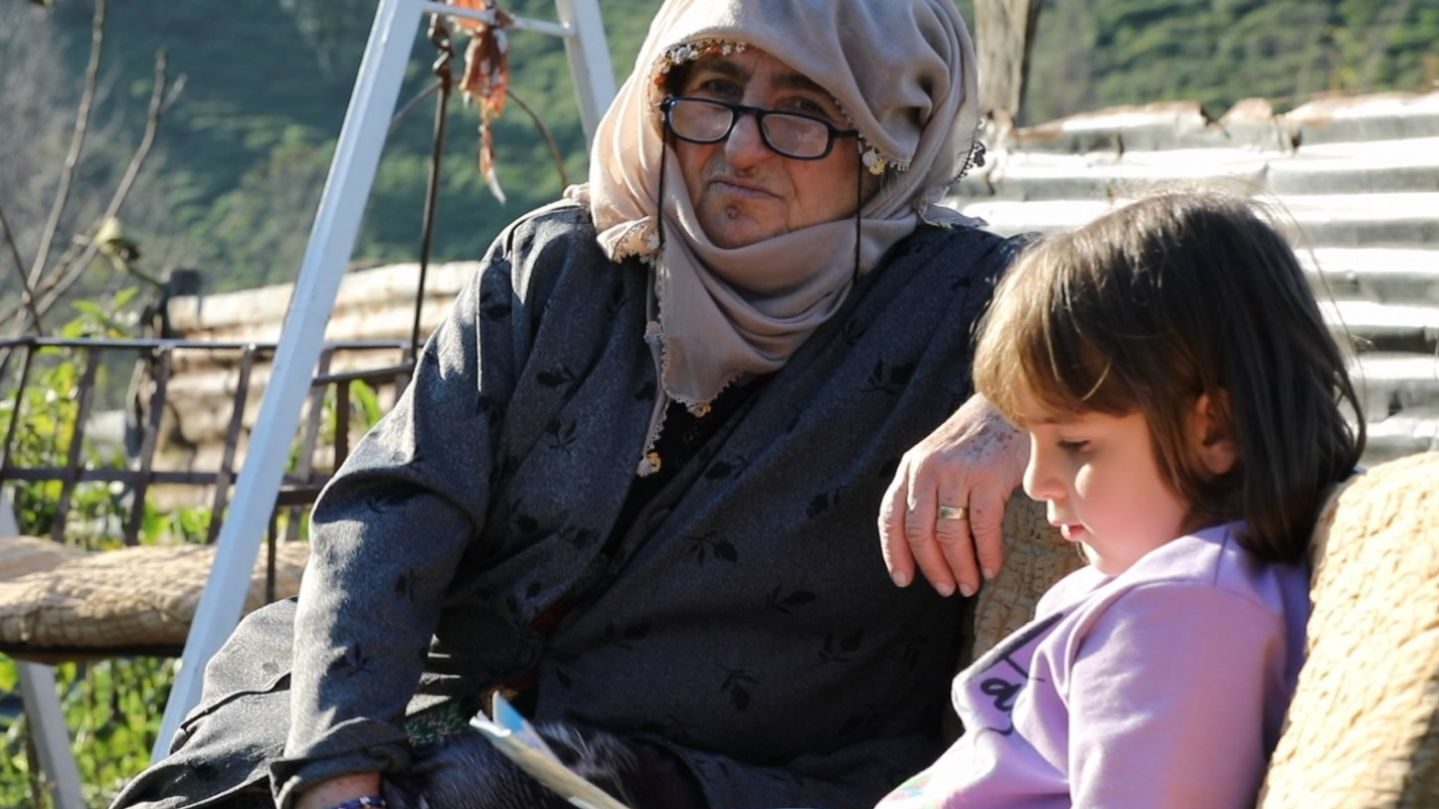
21 February 2024
For the love of languages: Meeting on minority tongues in Türkiye
With many of the diverse languages in Türkiye being endangered, some severely, time is of the essence.
-
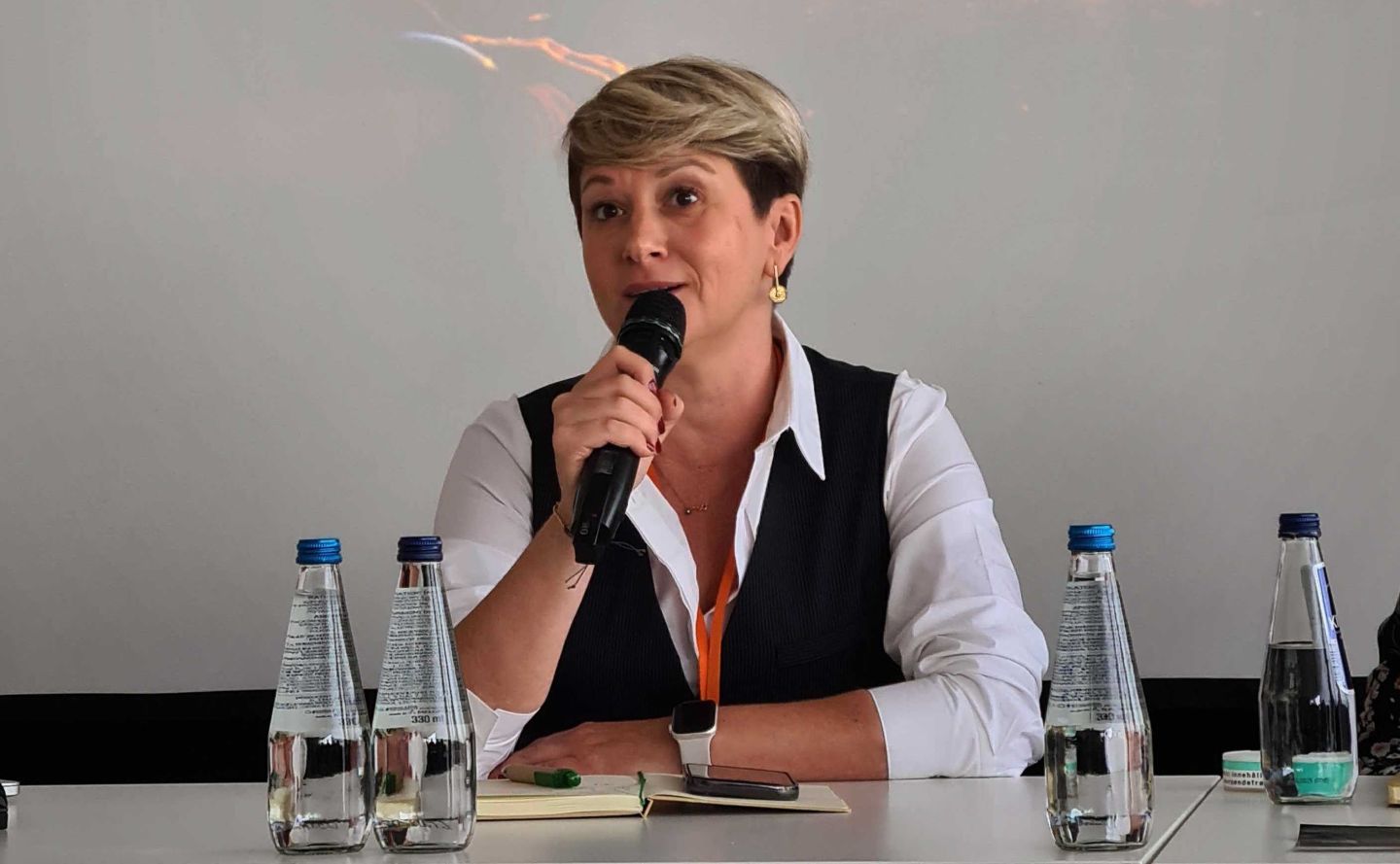
23 November 2023
Recognizing the rights of minorities in Türkiye – Q&A with Dr Yasemin Oral
Türkiye’s compliance with international human rights norms has worsened significantly over the past 5 years. The international community…
Reports and briefings
View all-
23 October 2019
The Turkish minority in Western Thrace: The long struggle for rights and recognition
The Turkish minority in Western Thrace has inhabited the region for centuries. However, despite a raft of protection in domestic and…
-
22 June 2017
Ignored and Unequal: Roma Access to the Right to Housing and Education in Türkiye
Türkiye’s Roma population and similar social groups such as Abdal have long been among the country’s most marginalized communities….
-
16 March 2009
Forgotten or Assimilated? Minorities in the Education System of Turkey
Since the Turkish Republic was established in 1923, minorities have been perceived as a threat to the ‘indivisible integrity of the state…
Guides and toolkits
-
4 December 2006
The Problem of Turkey’s Displaced Persons: An Action Plan for Their Return and Compensation
Millions of people are estimated to have been affected by forced migration or displacement in Türkiye in the east and southeast, during…
Partner publications
View all-
12 April 2024
The Abkhaz in Turkey: Navigating identity, unity and belonging
Abkhazs residing in Turkey share a profound historical connection with their homeland, Abkhazia. This report explores the multifaceted…
-
12 April 2024
Report on the monitoring of discrimination experienced by Dom, Abdal and Roma people in Southern Türkiye following the 2023 earthquake
Drawing on verified information, this study exposes various forms of discrimination against Dom, Abdal and Roma communities in the period…
-
12 April 2024
Circassians and Abkhaz-Abazas in metropolitan areas: The case of Istanbul and Ankara
Just as the invisibility of minorities in general, minorities in urban and metropolitan areas are also invisible to a large extent. Today,…
Events
-

17 February 2024 • 10:30 am – 5:00 pm EEST
Preserving and reinforcing mother tongue languages in Türkiye: From international practice and experience to local action
This event explored strategies and best practices for preserving and strengthening mother tongue languages within the context of Türkiye….
-
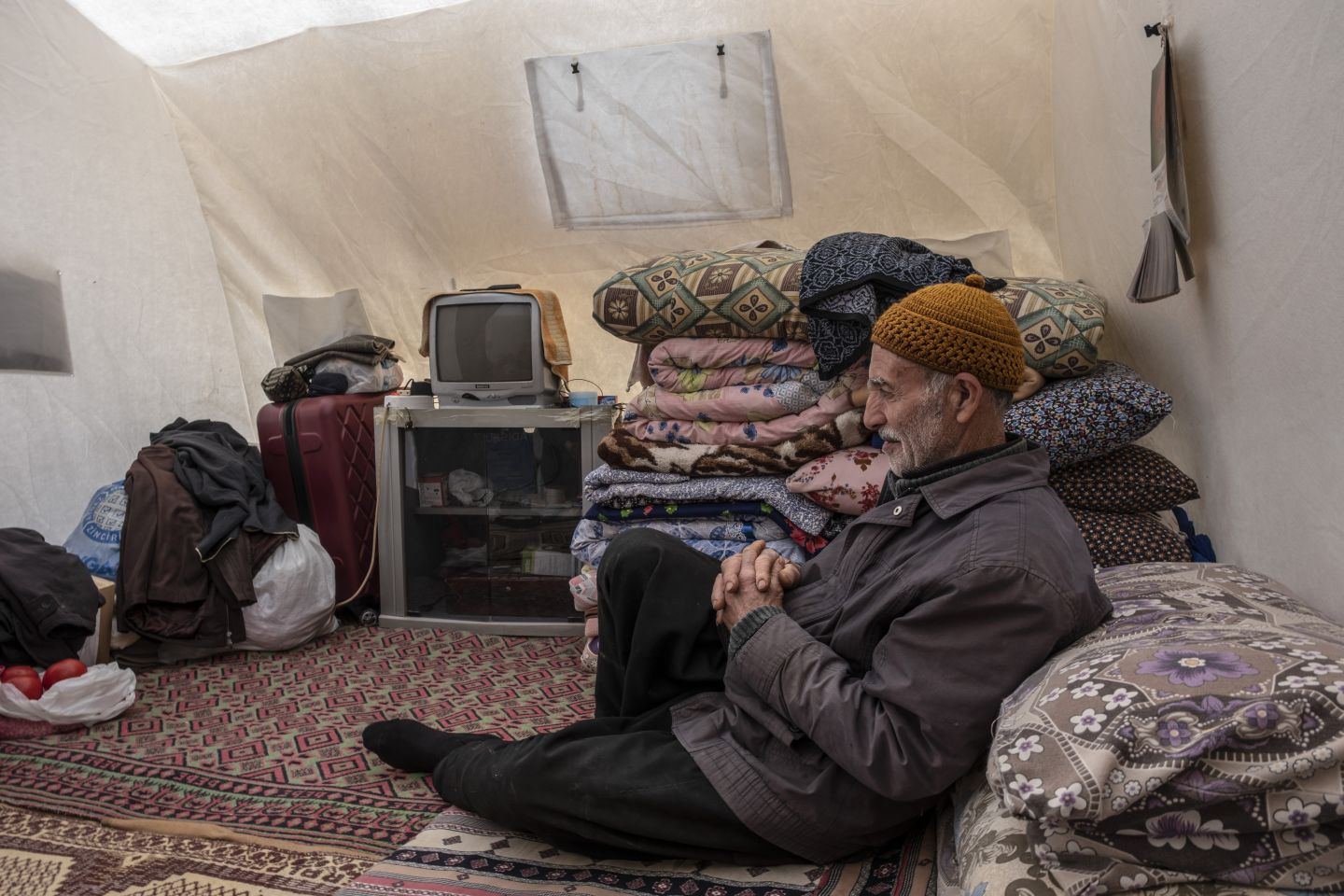
11 October 2023 • 2:00 – 3:00 pm CEST
Echoes of resilience and diversity: Unveiling minority stories from Türkiye amidst earthquake challenges
We are inviting you to our Warsaw Human Dimension Conference side event, ‘Echoes of Resilience and Diversity: Unveiling Minority…
-

12 June 2023 • 3:45 – 5:45 pm CEST
Untold stories of Turkish minorities and endangered languages
Join us on a captivating journey at Bem Mozi through the MARC (Minorities, Accountability, Rights, and Collaboration) programme of Minority…
Don’t miss out
- Updates to this country profile
- New publications and resources
Receive updates about this country or territory
-
Our strategy
We work with ethnic, religious and linguistic minorities, and indigenous peoples to secure their rights and promote understanding between communities.
-
-
